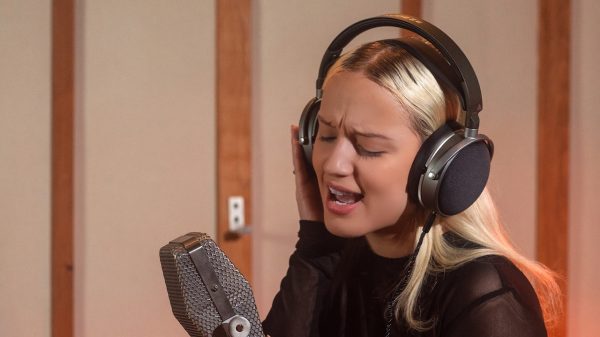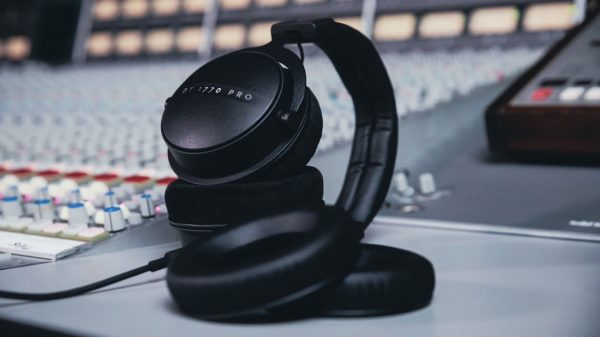Shure may have vacated the phono cartridge category where it had some excellent products for many years, but it is pushing rather hard with its second generation products in the headphone and earphone verticals. Having launched the next generation of the award-winning SE846 Gen 2 Earphones, the company has also reset its sights on the studio market in 2022.
The brand does not have a reputation for resetting its product lineup every year and the Shure 440 and 840 Studio Headphones have remained largely unchanged and continued to compete against the Sony MDR-7506 ($80) and Beyerdynamic DT-990 ($129).
Some of these products have existed within the studio ecosystem for almost 30 years but 2022 was probably the right time for some turnover; Beyerdynamic launched the new DT Pro X models and Shure has introduced the Shure SRH440A and SRH840A Studio Headphones.
Between the two brands, the new Beyerdynamic models are more of a refresh, whilst the new SRH headphones from Shure are a reimagining of the products.
The Skinny
Studio headphones take a lot of abuse and there is an expectation from users that the construction quality and durability will be up to the challenge. $99 might not seem like a lot of money for a pair of headphones for the studio or podcast sessions, but people expect Shure headphones to offer value and long-term performance.

The SRH440A are relatively robust; the frame is made from a polymer and includes a padded headband with a faux leather upper band and cloth lower section which rests on your hand.
The headband adjusts with positive clicks and a scale on the inside of each extension to help assist with adjustment. The adjustment arms terminate in a large flat that allows the gimbal to rotate 90° to the rear and roughly 15° to the front on the vertical axis.
The gimbals themselves are wide and rather durable; all of the wiring is hidden inside for protection and to lessen the amount of stress that is placed on it.

The gimbals attach at the mid-point of the ear cup and allow roughly 20° inward travel at the top but stop on the vertical axis to ensure a good seal even with glasses.
The ear cups are also manufactured from polymer using a 2-step design with the 40mm driver sitting in the larger forward portion and the rear portion providing an entry point for the cable and a rear cavity for air movement behind the driver.
The ear pads are faux leather as well and are just slightly bigger than the ear and touched in a couple of locations on my ear; they are fairly shallow with a total depth of about 1cm between pad face and driver.

The good news is pads are easily changed and replaced which should allow users to use aftermarket pads if desired. Shure also offers a rather extensive range of parts should you ever have to replace anything.
The cable is removable and attaches via the left ear cup with a slight forward angle for added comfort. The connection is made via a 2.5mm 3 pole connector in a locking connector which means that it won’t dislodge very easily. The other end of the cable is a 3.5mm TRS with a screw-on 6.35mm adapter plug.
While the cable and connector are very robust, they are also a proprietary design and you will need to source any replacement from Shure.

Internally, the Shure SRH440A uses a 40mm dynamic driver with a lightweight diaphragm and a neodymium magnet structure for improved performance compared to the original 440 driver.
The nominal impedance is listed as 40 ohms with a sensitivity of 97dB/mW; this makes the headphones rather easy to drive from a variety of sources.
There are also some package deals from Shure that include the SHR440A and Shure MV7 Podcast Microphone; which means the you can connect the headphones directly to the mic without the need for an external sound card.
We have used the Shure SRH440A with a wide range of sources including mics, DAPs, smartphones, and Dongle DACs; everything from the Cayin N3 to rather powerful desktop amplifiers like the Yulong Aurora and Xduoo. In almost every scenario, the headphones worked well and the performance scaled rather significantly with better sources.

Sound
If you are expecting the linearity and tonal accuracy of the Neumann NDH 30 from an $99 pair of headphones, you will have to search a lot harder; the Shure SRH440A are tuned more like a “V” with some added emphasis in the low end and a touch more detail in the mix.
The low end has rather good impact and definition and it is certainly emphasized more than the midrange; there is possibly too much low end impact and weight compared to most studio headphones but I understand why Shure decided to voice the SRH440A in this manner.
There is a rather common complaint about studio headphones being rather lightweight in the bass range and there is some merit to that. The sub-bass extends downward into the 30Hz range before it begins to bottom out and bass notes don’t have the same degree of definition or texture.
The mid bass is also emphasized but it begins to gradually roll-off as the sound moves into the lower midrange.
The SRH440A respond well to some EQ and I was able to tighten up the low end and alleviate the bleed into the mid bass creating a more balanced presentation overall. If you find the top end to be slightly too detailed or bright, some modest use of EQ worked well in that range.
The midrange is where the SRH440A really shine and I found male vocals to have more than enough weight and color without sounding too thick. Another complaint leveled against other studio headphones is that the midrange is too clean and that the vocals are pushed too far forward in the mix which doesn’t always sound very accurate or pleasant.
The SRH440A are not the most resolving studio headphones in the midrange; they certainly trade some micro detail for texture and a fuller sounding presentation.
The treble extension is rather good with only a small degree of added emphasis in the lower treble, followed by additional energy in the 8Hz to 10Hz range before it begins to roll-off around 15kHz. This gives the SRH440A rather solid percussion snap and cymbals have sufficient energy but don’t necessarily sound 100% accurate.
These are $99 headphones so to expect reference quality treble performance and a super wide soundstage is not being very realistic.

Conclusion
The Shure SRH440A are studio headphones and have to offer a number of things that most consumers buying headphones don’t think about as much; certainly not in this price range.
Durability is super important to musicians and engineers and these types of headphones take a lot more abuse and keep on going. The Shure offer that in a big way and that’s not the case for most headphones in this price range.
Studio headphones need to respond well to EQ adjustments and corrections. The Head-Fi audiophile community turn up their noses at EQ and think that if a headphone requires it — that’s probably a good reason to buy a different pair of headphones.
Mastering engineers though make a living making small tweaks to the sound of recordings and need to hear what those small changes on the console are going to do on the listeners systems when the album goes to market.
The Shure SRH440A hit both of those targets rather easily and offer an affordable entry-point into the studio headphone category from a brand that owns a considerable slice of the pie.
Are they one of the best $99 headphones on the market?
The better answer is that they offer durability, good sound quality, and don’t trip all over themselves when EQ is required.
Where to buy: $99 at Amazon
Related Reading:


































